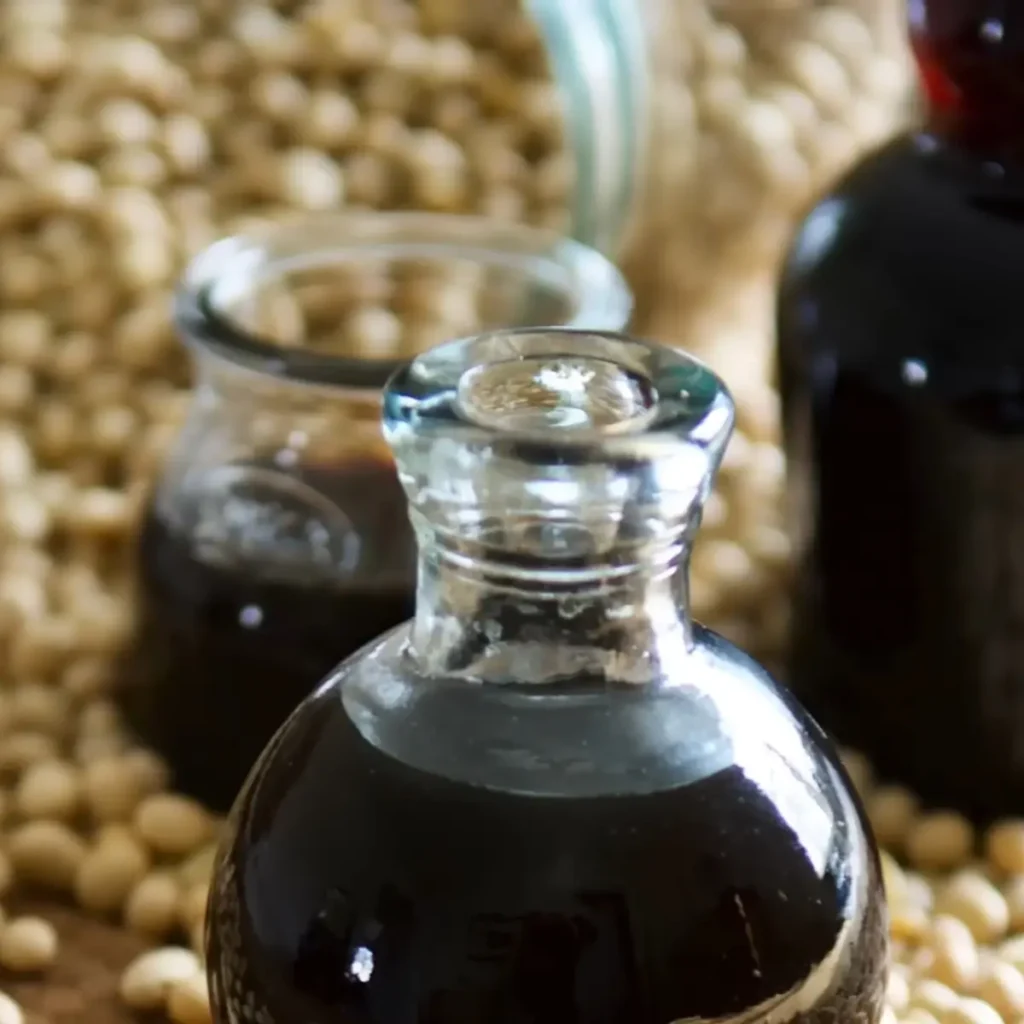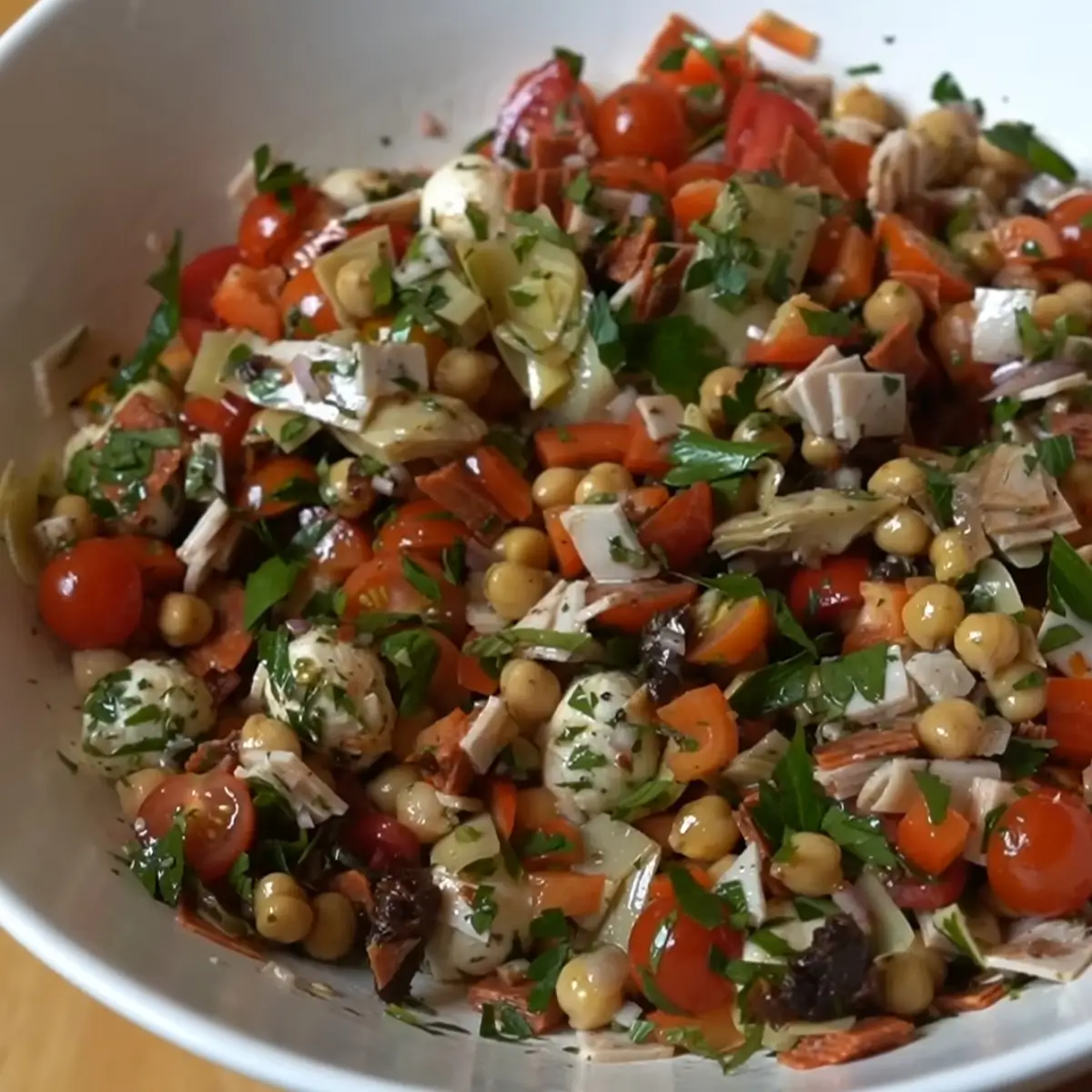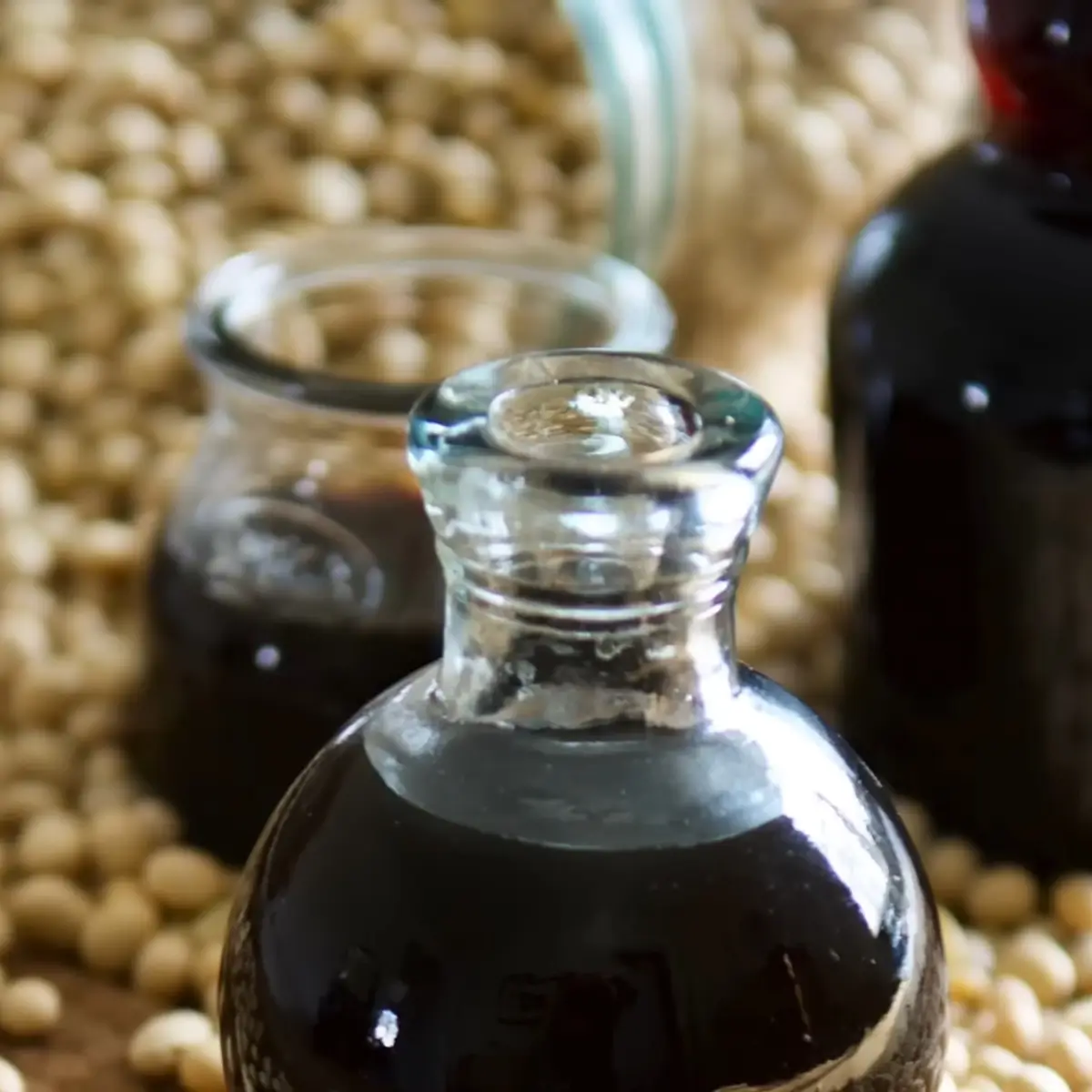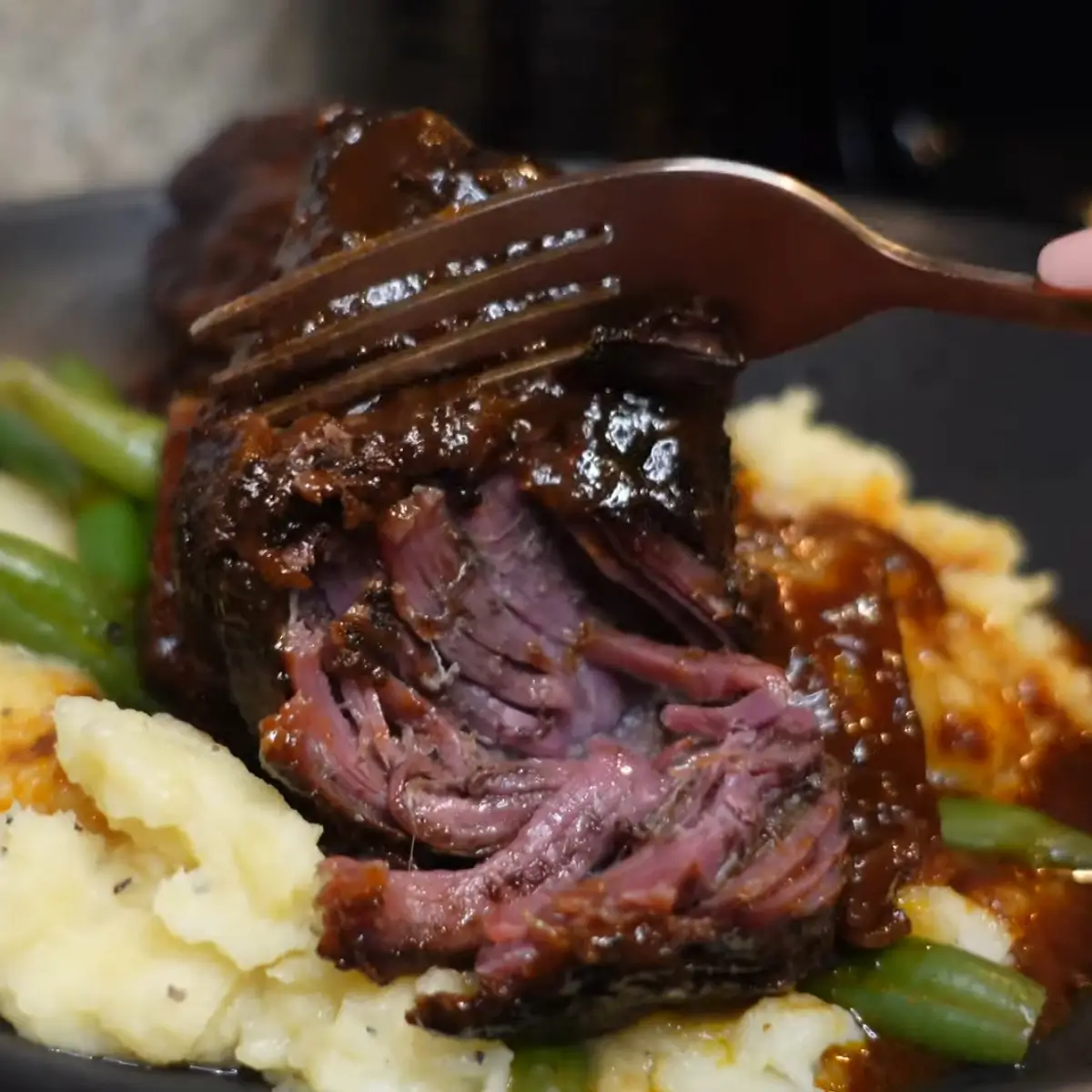When I was a child, I often sat at the kitchen table with my grandmother while she solved crossword puzzles with a pencil and a cup of cinnamon tea. One afternoon, she paused and chuckled, “What glaze is made with soy sauce and mirin?”
Before I could even guess, she wrote down the word: “teriyaki.” That moment stuck with me. As a culinary enthusiast now, I find it fascinating how crossword clues can intersect with deep-rooted culinary traditions.

This Glaze Made with Soy Sauce and Mirin Crossword clue, seemingly simple, brings together two fundamental components of Japanese cuisine. In crossword puzzle format, it often appears as a clue with a modest number of letters, usually leading to the answer “teriyaki”.
Yet, this can be misleading if one does not recognize the cultural context. The clue is not just linguistic—it is culinary, inviting solvers into a world where food knowledge intersects with language puzzles.
To answer it correctly, one must understand the ingredients involved. Soy sauce is a fermented condiment made from soybeans, wheat, and salt. Mirin is a type of sweet rice wine. When combined, these two create a foundational Japanese glaze used across many dishes.
Common Answers: Teriyaki and Tare
The most common answer to this crossword clue is “teriyaki”, which refers to a Japanese cooking method involving broiling or grilling with a glaze of soy sauce, mirin, and sugar.
Another correct, though less frequently seen, response is “tare”, a general term for dipping sauces and glazes in Japanese cuisine. These sauces are not interchangeable in all recipes, but both share the core ingredients of soy sauce and mirin.
- Teriyaki – Associated with grilling and glazing, typically sweeter.
- Tare – More versatile; used for yakitori, ramen, and donburi.
Knowing these answers equips solvers with not just a correct response, but also culinary insight.
Why This Clue Challenges Solvers
The difficulty of this clue lies in its cultural specificity. For those unfamiliar with Japanese cooking techniques, the association between soy sauce, mirin, and their respective sauces might not be immediately clear.
Many crossword puzzles expect solvers to possess a wide range of knowledge—from classical music to world cuisine. In this instance, solvers may guess sauces like “hoisin” or “ponzu,” which, while popular in Asian cuisine, do not match the exact mirin-based sauce described.
Additionally, regional variations and modern fusion dishes blur definitions. Some teriyaki sauces include garlic or ginger; some tare glazes lean spicy. The clue’s simplicity masks a rich, nuanced culinary tradition.
Understanding this clue encourages a deeper appreciation for the interplay between language, cuisine, and culture. It becomes more than a puzzle—it becomes a discovery.
Teriyaki and Tare: The Sauces Behind the Clue
Teriyaki: A Sweet-Savory Japanese Glaze
The first time I made teriyaki from scratch, I followed a handwritten recipe passed down by my Mexican neighbor, Señora Alicia. She told me, “Japanese cooking is about balance. Sweet, salty, umami—all must be there.” I mixed soy sauce and mirin, added sugar, and let it simmer. The smell brought the whole house to life.
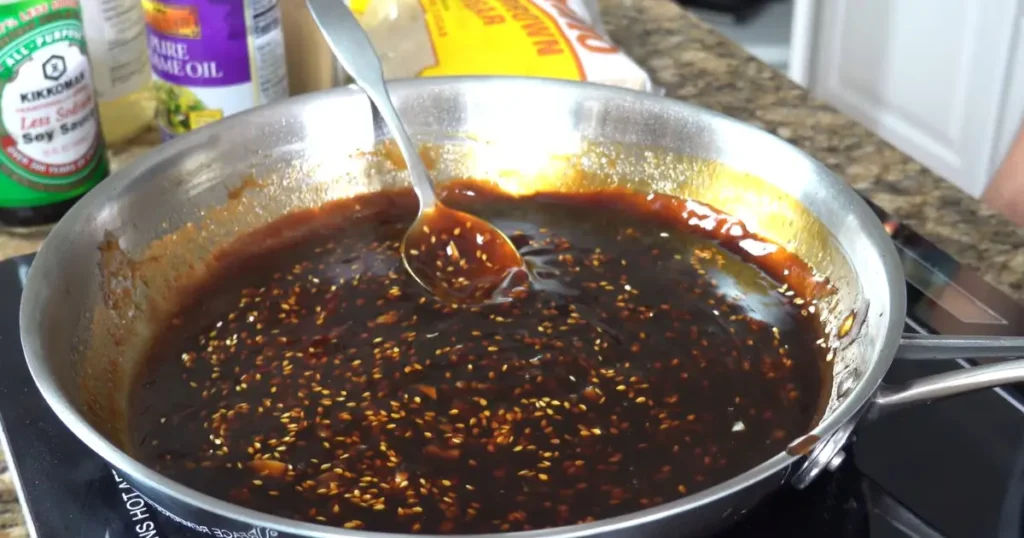
Teriyaki is both a cooking method and a sweet soy sauce glaze. The word “teriyaki” comes from the Japanese words “teri” (shine) and “yaki” (grill). The shine comes from the sugar and mirin content that caramelizes when heated. This Japanese glaze has become globally recognized, not only in Asian cuisine but also in Western kitchens.
Traditional teriyaki sauce includes:
- Soy Sauce: Provides salt and umami.
- Mirin: Adds sweetness and depth.
- Sake (optional): Contributes mild acidity.
- Sugar: Enhances the caramelization and sheen.
The glaze is applied in layers during grilling or broiling. As the meat or vegetables cook, the glaze thickens, creating a glossy coating. It works best with salmon, chicken, and beef.
Tare: The Versatile Base Sauce
While teriyaki is specific in its use and profile, tare refers to a broader category of sauces in Japanese cuisine. I first discovered tare when experimenting with homemade ramen. Tare is the secret behind the broth’s complexity.
Tare is a mirin-based sauce combined with soy sauce, sake, and occasionally dashi. It is essential in:
- Ramen: As a concentrated flavor base.
- Yakitori: Brushed over grilled chicken skewers.
- Donburi: Poured over rice bowls.
There are many types of tare, and they vary by dish. Some are sweet and sticky, others are salty and thin. This makes tare a master key to many doors in Japanese cooking.
Comparing Teriyaki and Tare
Though both use soy sauce and mirin, their applications and flavor intensities differ. Understanding these distinctions is key:
| Feature | Teriyaki | Tare |
|---|---|---|
| Use Case | Grilling and glazing | Dipping, seasoning, soup base |
| Texture | Thicker, glossy | Thin to thick, variable |
| Flavor Profile | Sweet-savory | Versatile: sweet, salty, spicy |
| Common Dishes | Teriyaki chicken, salmon | Ramen, yakitori, donburi |
Both deliver bold umami flavor, but tare’s flexibility makes it more prevalent in Japanese cooking techniques. These sauces reflect the culinary sophistication of Japanese cuisine.
Crafting the Perfect Soy Sauce and Mirin Glaze
Essential Ingredients: Soy Sauce and Mirin
When I first prepared a soy sauce and mirin glaze for grilled eggplant, I was surprised by how only two ingredients could produce such a robust flavor. The soy sauce provided the deep, savory umami flavor, while the mirin added a delicate sweetness that softened the saltiness.
Here are the essentials you will need:
- Soy Sauce: Opt for naturally brewed soy sauce, which has a richer profile.
- Mirin: Look for “hon mirin,” which contains real alcohol and sugar from fermentation.
- Optional Additions:
- Sake: Enhances the complexity
- Sugar or honey: For added sweetness
- Garlic or ginger: For depth and aroma
The quality of the ingredients significantly impacts the final glaze. Cheap substitutes may result in a flat taste. I always recommend sourcing authentic Japanese brands when possible.
Step-by-Step Recipe for a Basic Glaze

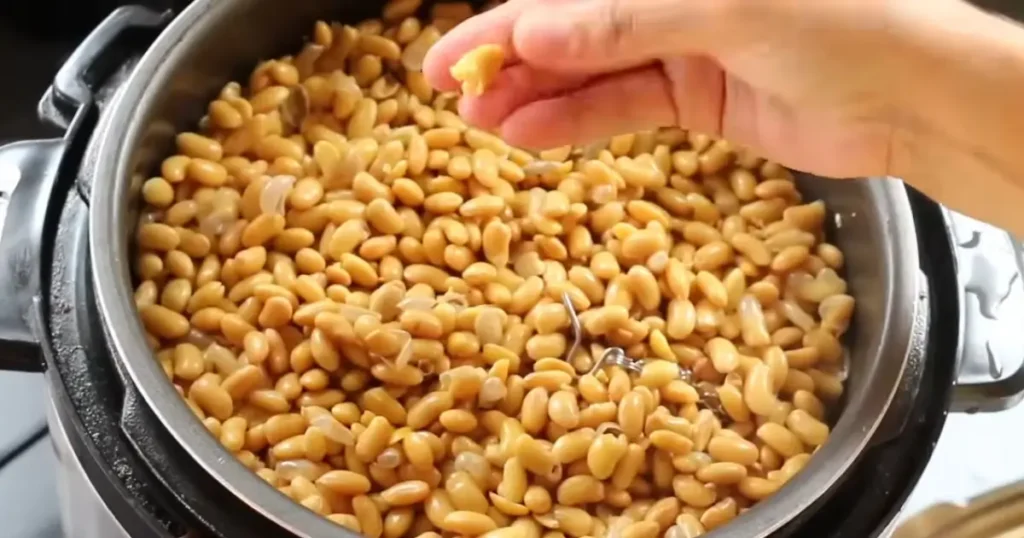
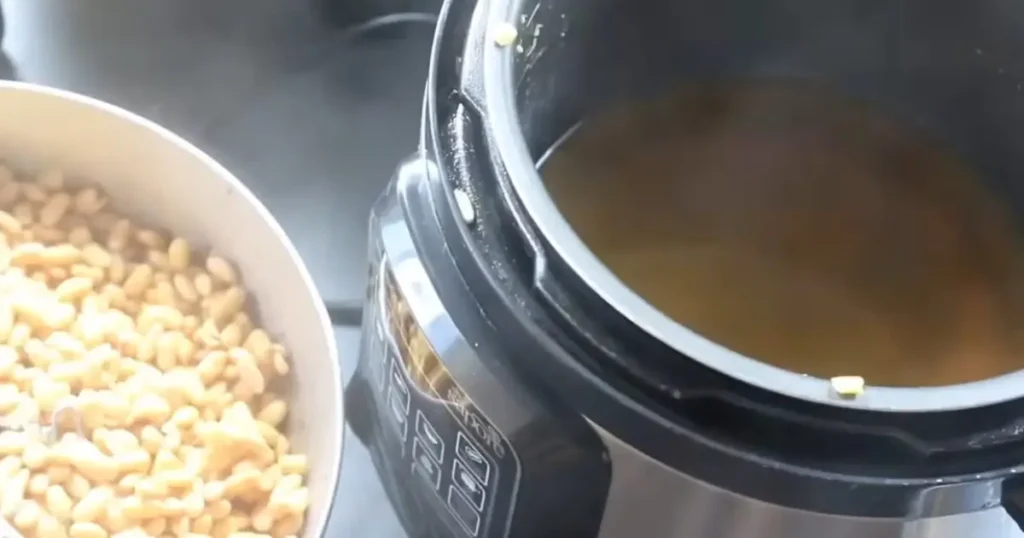
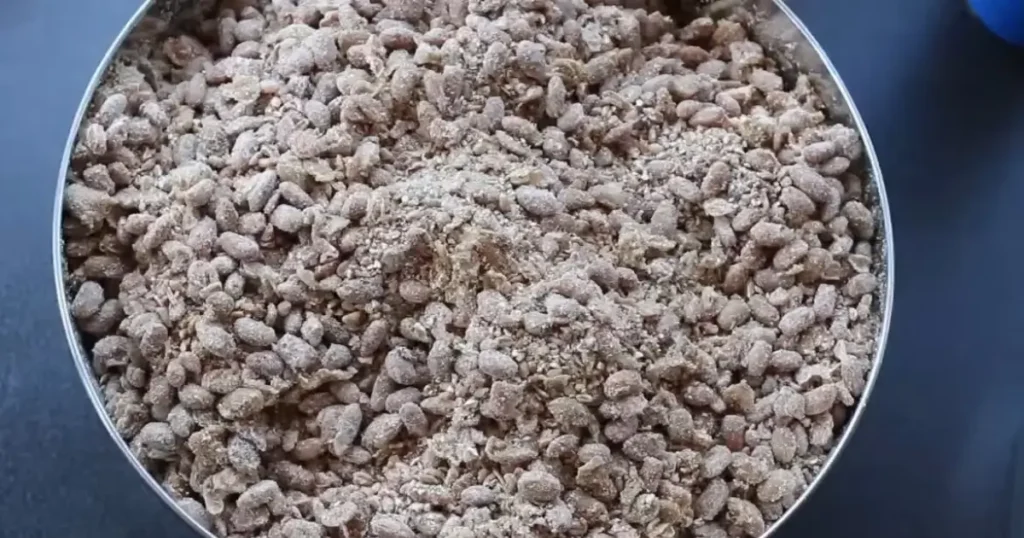
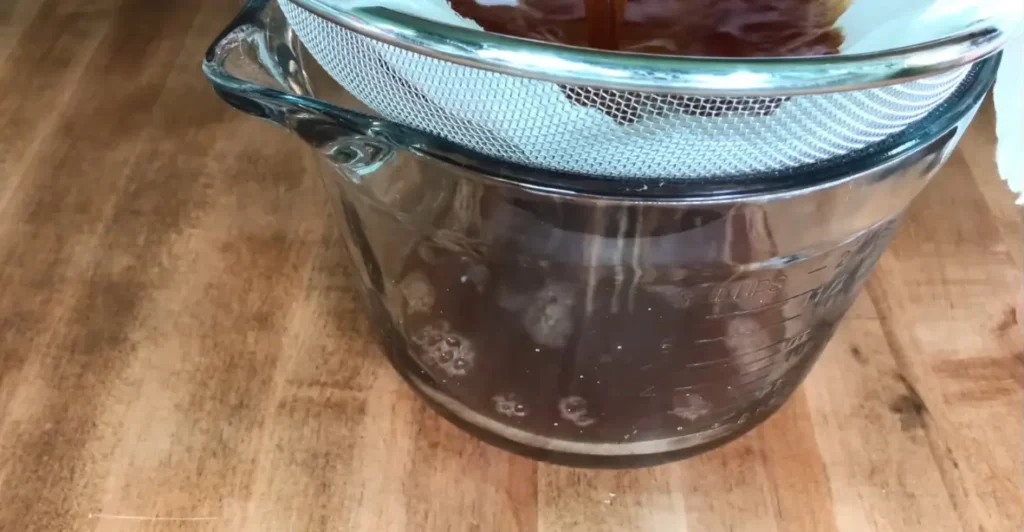

This is my go-to recipe for a versatile soy sauce marinade that I use for everything from tofu to grilled chicken:
- Combine 1/4 cup soy sauce and 1/4 cup mirin in a small saucepan.
- Add 1 tablespoon sugar (optional but enhances the sheen).
- Bring the mixture to a gentle boil over medium heat.
- Reduce heat and simmer for 5-7 minutes until the sauce thickens slightly.
- Let it cool before brushing or pouring onto your dish.
This glaze keeps in the refrigerator for up to one week. I usually double the recipe and store it in a glass jar.
Tips for Achieving the Ideal Consistency
- Simmer Slowly: Avoid high heat to prevent burning the sugars.
- Stir Constantly: Prevents sticking and ensures even reduction.
- Test with a Spoon: Dip a metal spoon into the glaze; if it coats the back evenly, it is ready.
- Do Not Over-Reduce: A glaze that is too thick may become tacky or overly salty.
Using this glaze turns ordinary dishes into culinary experiences. It is amazing how a simple combination of soy sauce and mirin can elevate any meal into something memorable.
Culinary Applications of the Glaze
Popular Dishes Featuring the Glaze
Growing up, my mom often prepared teriyaki-glazed salmon on Sundays, serving it with steamed jasmine rice and pickled cucumbers. That familiar aroma of sweet soy reduction still lingers in my memory, evoking warmth and comfort.
This glaze has become integral in many well-known dishes:
- Teriyaki Chicken: Pan-seared or grilled, brushed repeatedly with the glaze for a lacquered finish.
- Salmon Teriyaki: A classic dish showcasing the harmony between rich fish and sweet-savory glaze.
- Yakitori: Skewered chicken, often served street-side in Japan, glazed mid-grill with tare or teriyaki.
The deep umami flavor imparted by this glaze makes it ideal for enhancing both protein and plant-based dishes. Its versatility has made it a staple not only in Japanese kitchens but also in fusion cuisine around the world.
Modern Twists and Fusion Recipes
Contemporary chefs have embraced the Japanese glaze concept and reimagined it in diverse ways. I once tasted a teriyaki-glazed jackfruit taco at a food festival. It was a delightful East-meets-West experience.
Innovative uses include:
- Teriyaki Veggie Burgers: Portobello mushrooms or tofu patties glazed and grilled.
- Soy-Mirin BBQ Ribs: Blending American barbecue techniques with Japanese flavor profiles.
- Sushi Bowls: Drizzled with reduced glaze instead of standard soy sauce.
This sauce adapts beautifully to changing dietary preferences, from vegan to keto. Its simplicity is its strength, allowing creativity to flourish.
Pairing the Glaze with Various Proteins and Vegetables
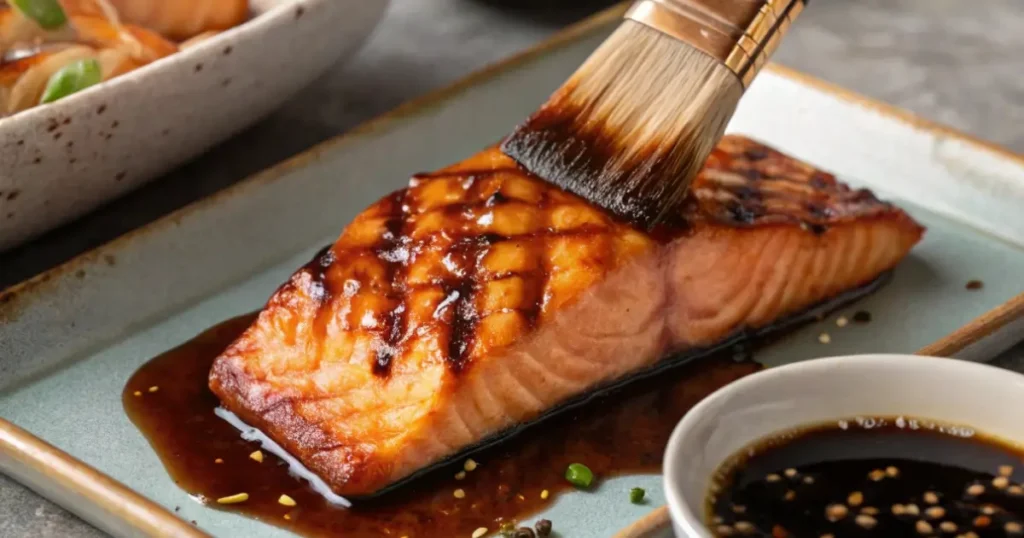
This mirin-based sauce complements a wide array of ingredients:
- Proteins: Chicken, salmon, beef, tofu, turkey.
- Vegetables: Eggplant, bell peppers, mushrooms, Brussels sprouts.
- Grains and Noodles: Jasmine rice, soba, ramen, quinoa.
Balancing the glaze’s sweetness with acidity (a splash of citrus or vinegar) can enhance its depth. Whether searing on a hot pan or baking in an oven, this glaze transforms dishes into something truly extraordinary.
The Cultural Significance of Soy Sauce and Mirin in Japanese Cuisine
Historical Origins of Teriyaki and Tare
I remember a rainy afternoon when my aunt, who studied in Kyoto, told me stories about Edo-period cooking practices. We sat sipping green tea as she explained how teriyaki was more than just a sauce—it was a preservation technique.
In the 1600s, Japanese coastal communities used the glaze’s sugar content to extend the freshness of grilled fish, enhancing both flavor and longevity.
The word “teriyaki” itself reflects this function: “teri” meaning shine, and “yaki” meaning grill. Likewise, tare—a broader term encompassing dipping sauces and broths—evolved from methods meant to elevate simple street food into rich, hearty meals. The Japanese language and culinary practices are deeply intertwined, and sauces like these are tangible symbols of that legacy.
Soy sauce, brought from China and refined in Japan over centuries, became the country’s essential condiment. Paired with mirin, a product of rice fermentation, these elements became the foundation for a variety of Japanese cooking techniques still revered today.
The Role of Soy Sauce and Mirin in Traditional Dishes
Soy sauce and mirin are pillars of the Japanese kitchen. Their combined presence defines the core of dishes like nikujaga, sukiyaki, and agedashi tofu. This mixture offers:
- Balance of salty and sweet
- Signature sheen in glazes
- Complex umami flavor that deepens with cooking
During my trip to Osaka, I visited a traditional izakaya where nearly every item on the menu used a base of tare. From yakitori skewers to simmered daikon, the richness of these sauces unified the menu, echoing a cultural preference for depth and subtlety in flavor.
Evolution of Japanese Glazes in Global Cuisine
Today, Japanese glazes appear on menus across continents. Whether drizzled over tacos in Mexico or glazed on tofu in California, teriyaki recipes have become culinary ambassadors. Modern adaptations may incorporate pineapple, orange zest, or chili paste, yet the backbone—soy sauce and mirin—remains untouched.
These glazes are not just sauces; they are cultural bridges. Every time we use them, we participate in a story centuries in the making.
Navigating Cooking Clues in Crosswords
Common Culinary Terms in Crossword Puzzles
I often recall how my grandmother’s crosswords opened a doorway to learning. One day, she nudged me and asked, “What’s a six-letter word for ‘to cook below boiling’?”
I guessed wrong, but learned the answer: “simmer.” These culinary clues, though brief, offer insights into cooking methods and terms that appear frequently in both casual and professional kitchens.
Common crossword culinary terms include:
- Simmer – To cook gently below boiling
- Dice – To cut into small, even cubes
- Knead – To work dough with the hands
- Baste – To moisten food during cooking
These words reflect fundamental kitchen actions, and they often feature in puzzles due to their concise and familiar nature. Being familiar with such culinary terminology can significantly improve a solver’s speed and accuracy.
Strategies for Solving Food-Related Clues
Solving crossword clues related to food becomes easier with a few strategies:
- Look for keywords: Clues mentioning sweet, salty, or fermented often point toward sauces or condiments.
- Consider language origin: Foreign cooking terms (like “teriyaki” or “gazpacho”) often signal the answer is also in that language.
- Length of the answer: Count the letters to narrow possibilities.
- Think like a chef: Imagine the cooking process to guess verbs like “roast” or “blend.”
Crossword creators frequently rely on mirin-based sauce clues to challenge solvers with culinary knowledge. Recognizing ingredients or cooking techniques is often the key.
Resources for Enhancing Culinary Knowledge
To build your culinary vocabulary for crosswords, consider:
- Reading cookbooks from diverse cultures
- Watching food documentaries and cooking shows
- Visiting food blogs and online recipe communities
- Using apps or puzzle books focused on food themes
These resources not only improve crossword performance but enrich your overall appreciation of global cuisines and their distinctive techniques.
Disclaimer: This article is intended for informational and educational purposes only. It does not constitute professional advice, diagnosis, or treatment. Always consult a qualified culinary expert or health professional for specific guidance related to food preparation, ingredients, or dietary needs.
Soy Sauce and Mirin FAQs
Can I mix mirin and soy sauce?
Yes, and in fact, this combination is the foundation for many traditional Japanese sauces, including teriyaki and tare. When combined, soy sauce and mirin offer a perfect balance of salty and sweet, ideal for glazing and marinating. I often mix them in equal parts and add a bit of sugar for my grilled eggplant or chicken dishes. Just ensure your mirin is genuine (“hon mirin”) for best results.
How to make soy glaze with soy sauce?
To make a simple soy glaze, I combine:
2 tablespoons soy sauce
2 tablespoons mirin
1 tablespoon sugar
I simmer the mixture until it thickens, creating a luscious glaze. This basic formula can be adapted with additions like garlic, ginger, or chili for more complexity. This kind of glaze is central in many teriyaki recipes and dishes requiring a sweet soy sauce profile.
What is mirin and soy sauce called?
When used together, mirin and soy sauce do not have a single unified name, but the resulting mixture is a base for sauces like tare or teriyaki. Some recipes may refer to it generically as a Japanese glaze or soy sauce marinade.
How to make a sauce with mirin?
To make a sauce with mirin, combine it with soy sauce, sake (optional), and a sweetener. I often use:
2 tbsp mirin
2 tbsp soy sauce
1 tbsp sake
1 tsp sugar
Heat and reduce this blend for a flavorful, glossy finish perfect for rice bowls, grilled fish, or vegetables.

Simple Soy Sauce and Mirin Glaze
Ingredients
Method
- In a small saucepan, combine 2 tablespoons of soy sauce and 2 tablespoons of mirin.
- Heat the mixture over medium heat.
- Let it simmer gently until the liquid reduces and thickens slightly, forming a glossy glaze. This should take about 3 to 4 minutes.
- Once thickened to a glaze consistency, remove from heat and use immediately or store for later use.

